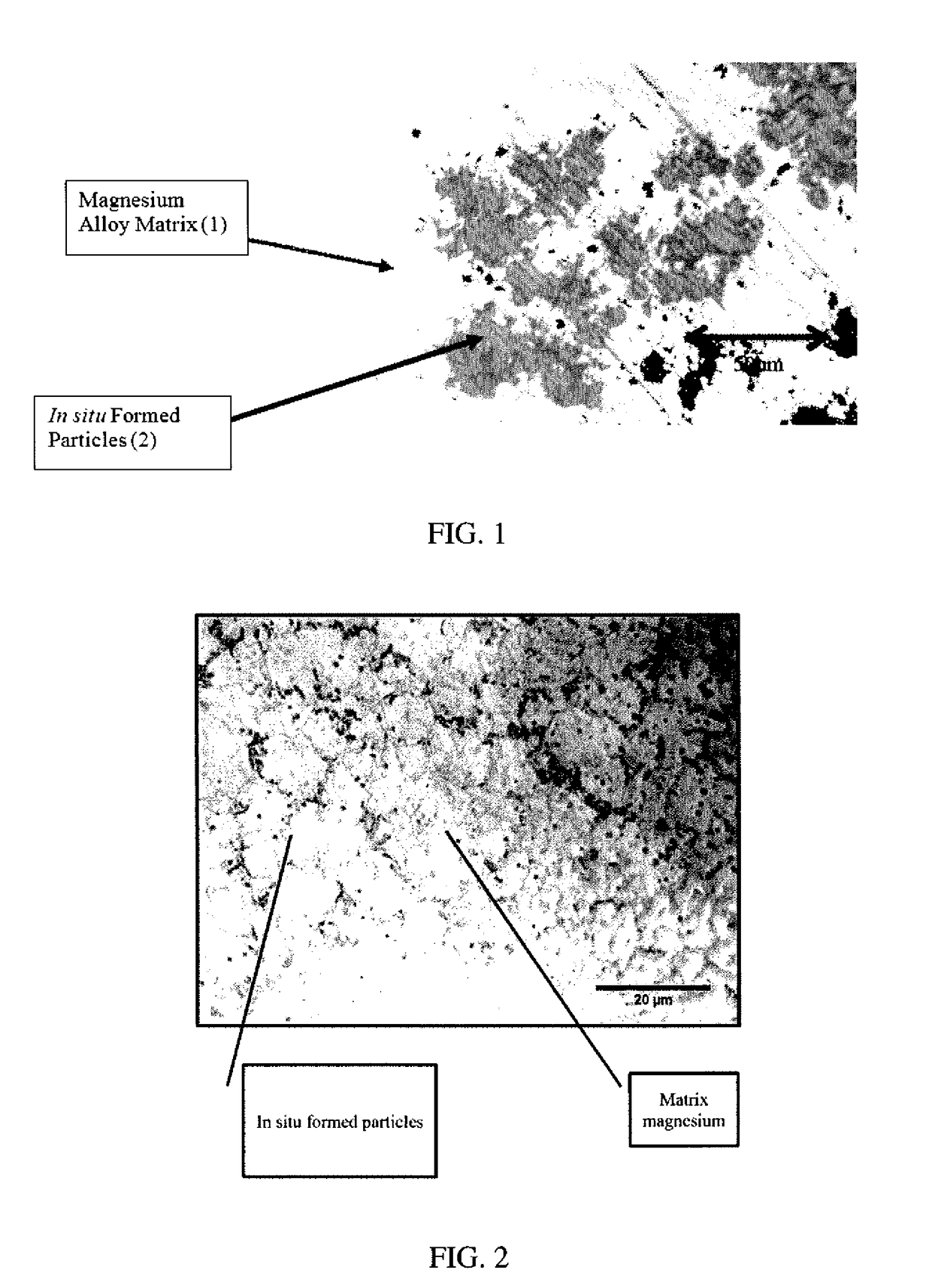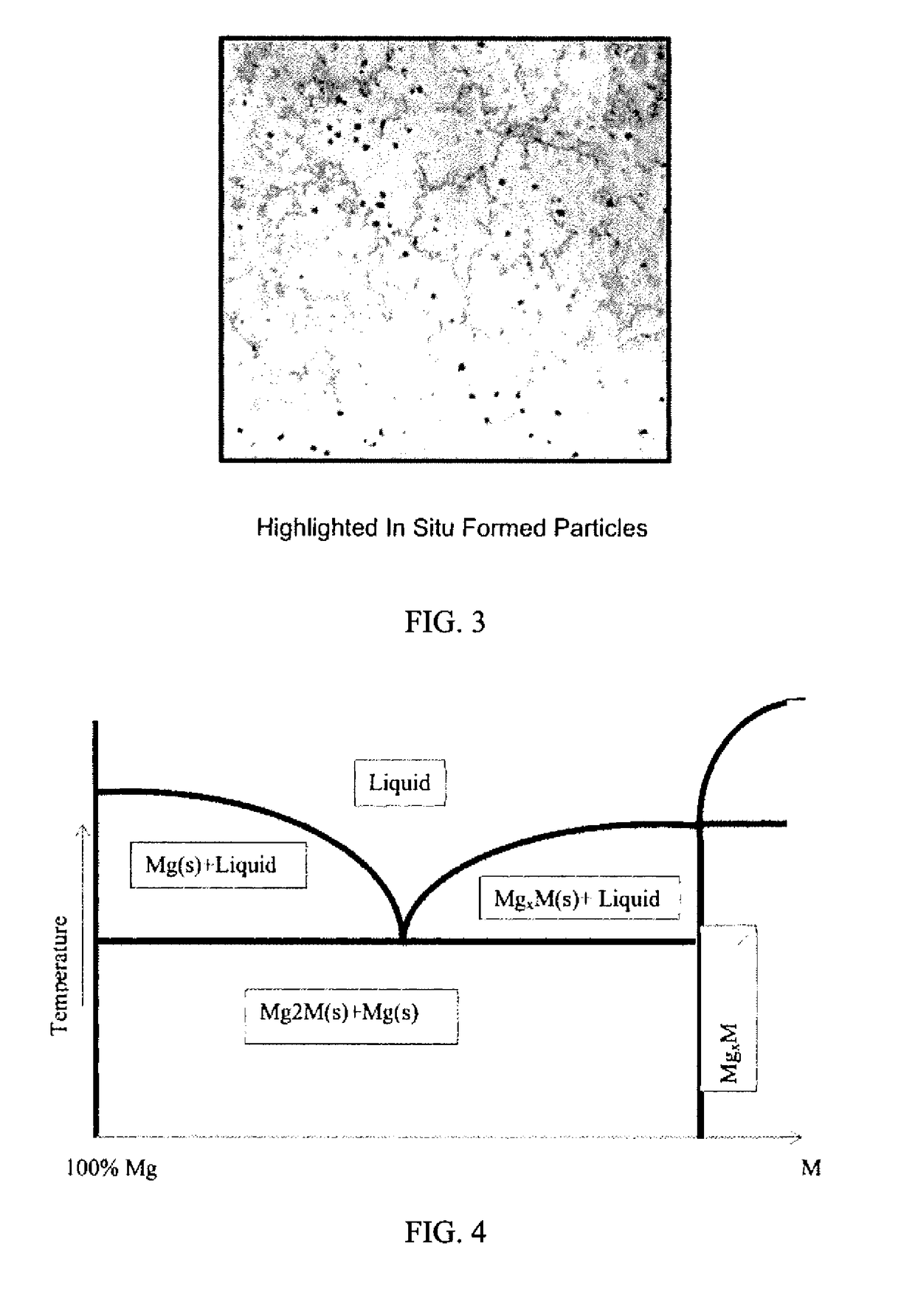Galvanically-Active In Situ Formed Particles for Controlled Rate Dissolving Tools
a technology of in situ formed particles and dissolvable materials, which is applied in the direction of metal-working apparatuses, transportation and packaging, etc., can solve the problems of individual additive elements not fully melting in molten magnesium, and achieve the effects of enhancing the speed of alloy degradation, increasing the incipient melting point, and increasing the corrosion ra
- Summary
- Abstract
- Description
- Claims
- Application Information
AI Technical Summary
Benefits of technology
Problems solved by technology
Method used
Image
Examples
example 1
[0119]An AZ91D magnesium alloy having 9 wt. % aluminum, 1 wt. % zinc and 90 wt. % magnesium was melted to above 800° C. and at least 200° C. below the melting point of nickel. About 7 wt. % of nickel was added to the melt and dispersed. The melt was cast into a steel mold. The cast material exhibited a tensile strength of about 14 ksi, an elongation of about 3%, and shear strength of 11 ksi. The cast material dissolved at a rate of about 75 mg / cm2-min in a 3% KCl solution at 90° C. The material dissolved at a rate of 1 mg / cm2-hr in a 3% KCl solution at 21° C. The material dissolved at a rate of 325 mg / cm2-hr. in a 3% KCl solution at 90° C.
example 2
[0120]The composite in Example 1 was subjected to extrusion with an 11:1 reduction area. The material exhibited a tensile yield strength of 45 ksi, an Ultimate tensile strength of 50 ksi and an elongation to failure of 8%. The material has a dissolve rate of 0.8 mg / cm2-min. in a 3% KCl solution at 20° C. The material dissolved at a rate of 100 mg / cm2-hr. in a 3% KCl solution at 90° C.
example 3
[0121]The alloy in Example 2 was subjected to an artificial T5 age treatment of 16 hours from 100-200° C. The alloy exhibited a tensile strength of 48 ksi and elongation to failure of 5% and a shear strength of 25 ksi. The material dissolved at a rate of 110 mg / cm2-hr. in 3% KCl solution at 90° C. and 1 mg / cm2-hr. in 3% KCl solution at 20° C.
PUM
| Property | Measurement | Unit |
|---|---|---|
| pressures | aaaaa | aaaaa |
| temperatures | aaaaa | aaaaa |
| temperatures | aaaaa | aaaaa |
Abstract
Description
Claims
Application Information
 Login to View More
Login to View More - R&D
- Intellectual Property
- Life Sciences
- Materials
- Tech Scout
- Unparalleled Data Quality
- Higher Quality Content
- 60% Fewer Hallucinations
Browse by: Latest US Patents, China's latest patents, Technical Efficacy Thesaurus, Application Domain, Technology Topic, Popular Technical Reports.
© 2025 PatSnap. All rights reserved.Legal|Privacy policy|Modern Slavery Act Transparency Statement|Sitemap|About US| Contact US: help@patsnap.com


